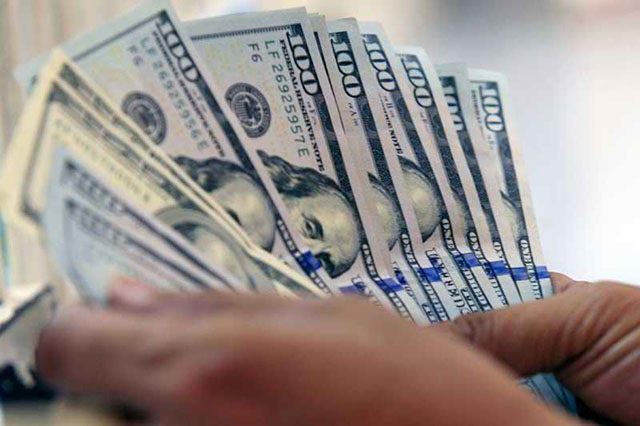- Singapore dollar inches up 0.2% vs. USD
- Thai baht hovers near 30-month high
- Philippine stocks up 1.3%
The Singapore dollar gained on Thursday after strong industrial production data boosted growth prospects, while most Asian stock markets edged higher, buoyed by enthusiasm at China’s aggressive stimulus package to boost the region’s largest economy.
The Singapore dollar <SGD=> strengthened 0.2% against the greenback. The currency has been hovering near a seven-year high touched earlier in the week. Local stocks <.STI>, on the other hand, traded flat.
Data showed that industrial production in the city-state jumped 21% year-on-year in August, compared with the 9% increase estimated in a Reuters poll, lifted by a higher biomedicals and electronics output.
Analysts at Barclays estimate Singapore’s gross domestic product growth is on track to rise to 4.2% year-on-year in the third quarter, compared with 2.9% in the second quarter, with the rebound in manufacturing being the swing factor.
They also expect the Monetary Authority of Singapore to leave its forex policy settings unchanged through 2025, with the policy statement sounding less hawkish but not dovish.
Among other Southeast Asian assets, Manila stocks <.PSI> gained 1.3%, while equities in Taipei <.TWII> were up 0.4%.
The Indonesian rupiah <IDR=> and the Philippine peso <PHP=> weakened 0.5% and 0.1%, respectively.
On Wednesday, the People’s Bank of China cut medium-term lending rates to banks, a day after Beijing unveiled wide-ranging policy easing measures including steps to boost the stock market and support for the ailing property sector.
Also aiding sentiment, Bloomberg News reported earlier in the day that China was considering plans to inject capital of up to 1 trillion yuan ($142.46 billion) into its biggest state banks to beef up capacity to support the struggling economy.
Optimism remains broadly intact, said Christopher Wong, a currency strategist at OCBC, especially on talk of the capital injection, although some Asian currencies might see profit-taking after their extended rally.
“The positive combination of hopes of another round of support measures (leading to steady yuan), growth in the region looking well, Fed easing cycle and softer U.S. dollar, should continue to be supportive of Asian FX recovery,” Wong said.
The Thai baht <THB=TH> gained 0.1% to hover near a 30-month high hit on Wednesday. The country’s benchmark stock index <.SETI> slipped 0.3%.
The baht has been among Southeast Asia’s top performers this year, boosted by political stability, foreign inflows and strong gold prices.
Seoul stocks <.KS11> jumped 2.9% as heavyweight chipmakers rallied after U.S. peer Micron Technology posted strong quarterly earnings amid solid demand for its memory chips.
Globally, market participants will watch for a slew of U.S. data, such as GDP and jobless claims, along with speeches by Federal Reserve policymakers, including remarks from Chair Jerome Powell, that could furnish clues to the rate outlook.
HIGHLIGHTS:
** Malaysia generating enough energy surplus for big development projects and exports, PM says
** S&P Global says Vietnam banks’ profitability squeezed due to typhoon debt relief measures
** Thailand plans to introduce carbon tax, official says
($1=7.0195 Chinese yuan)
| Asian stock indexes and currencies at 0711 GMT | ||||||
| COUNTRY | FX RIC | FX DAILY % | FX YTD % | INDEX | STOCKS DAILY % | STOCKS YTD % |
| Japan | <JPY=> | -0.10 | -2.65 | <.N225> | 2.79 | 16.32 |
| China | <CNY=CFXS> | +0.22 | +1.13 | <.SSEC> | 3.57 | 0.83 |
| India | <INR=IN> | -0.10 | -0.56 | <.NSEI> | 0.35 | 20.08 |
| Indonesia | <IDR=> | -0.51 | +1.47 | <.JKSE> | -0.01 | 6.43 |
| Malaysia | <MYR=> | -0.05 | +11.16 | <.KLSE> | -0.35 | 14.63 |
| Philippines | <PHP=> | -0.09 | -0.97 | <.PSI> | 1.31 | 15.64 |
| S.Korea | <KRW=KFTC> | +0.59 | -3.03 | <.KS11> | 2.90 | 0.61 |
| Singapore | <SGD=> | +0.24 | +2.54 | <.STI> | -0.04 | 10.54 |
| Taiwan | <TWD=TP> | -0.15 | -3.61 | <.TWII> | 0.43 | 27.48 |
| Thailand | <THB=TH> | +0.14 | +4.64 | <.SETI> | -0.31 | 2.91 |
—Reporting by Echha Jain and Aaditya Govind Rao in Bengaluru; Editing by Clarence Fernandez and Subhranshu Sahu










